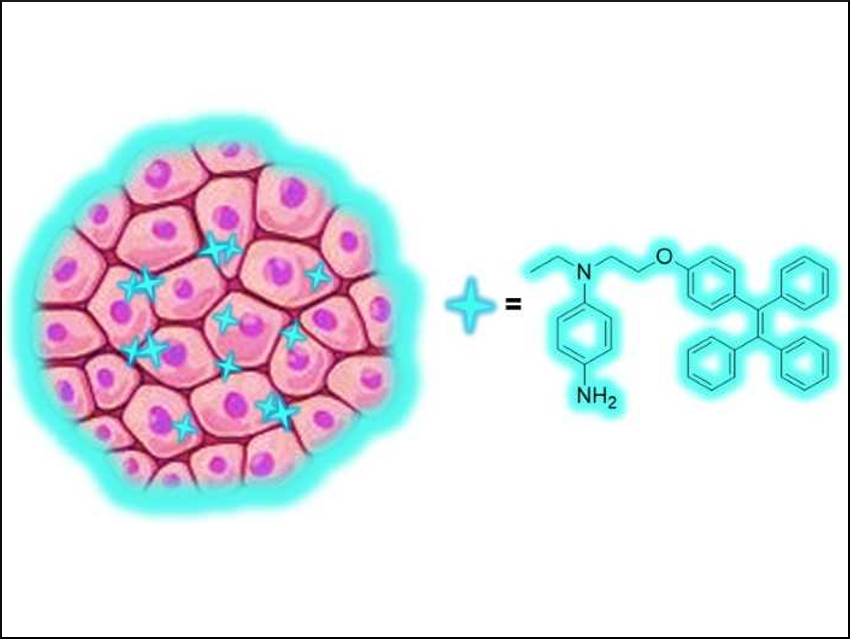Aggregation‐induced emission (AIE) dots are useful for bioimaging techniques due to their high brightness and biocompatibility. In contrast to conventional fluorophores, whose emission is quenched in an aggregated state, AIE fluorogens emit strongly in the aggregated state. Developing environment-sensitive AIE dots could expand the possible applications of these nanoaggregates.
Yaning He, Juanjuan Du, and colleagues, Tsinghua University, Beijing, China, have constructed a hypoxia-responsive “turn-on” AIE fluorescence probe. Hypoxia, i.e., a reduced oxygen concentration, is a common feature of malignant tumors. The AIE probe consists of PEGylated azobenzene-caged tetraphenylethene (PEG-Azo-TPE). It was synthesized by an azo-coupling reaction between a PEGylated diazonium salt and a TPE-modified aniline. The product is amphiphilic, with a hydrophobic TPE head and a hydrophilic PEG tail. Thus, it can self‐assemble into micelles in aqueous solutions.
The as-synthesized aggregates do not fluoresce. However, the azo bond in the synthesized compound can be efficiently cleaved by the enzyme azoreductase under hypoxic conditions. Due to the over-expression of azoreductases in hypoxic cancer cells, the azobenzene linkage is broken in the tumor environment. This turns on the fluorescence of the AIE dots, which makes them useful as a probe. According to the researchers, this work opens up new possibilities for tumor imaging with AIE dots.
- “Turn‐On” Activatable AIE Dots for Tumor Hypoxia Imaging,
Tianhao Xue, Xiangqian Jia, Jilei Wang, Jingyuan Xiang, Wei Wang, Juanjuan Du, Yaning He,
Chem. Eur. J. 2019, 25, 9634–9638.
https://doi.org/10.1002/chem.201902296




